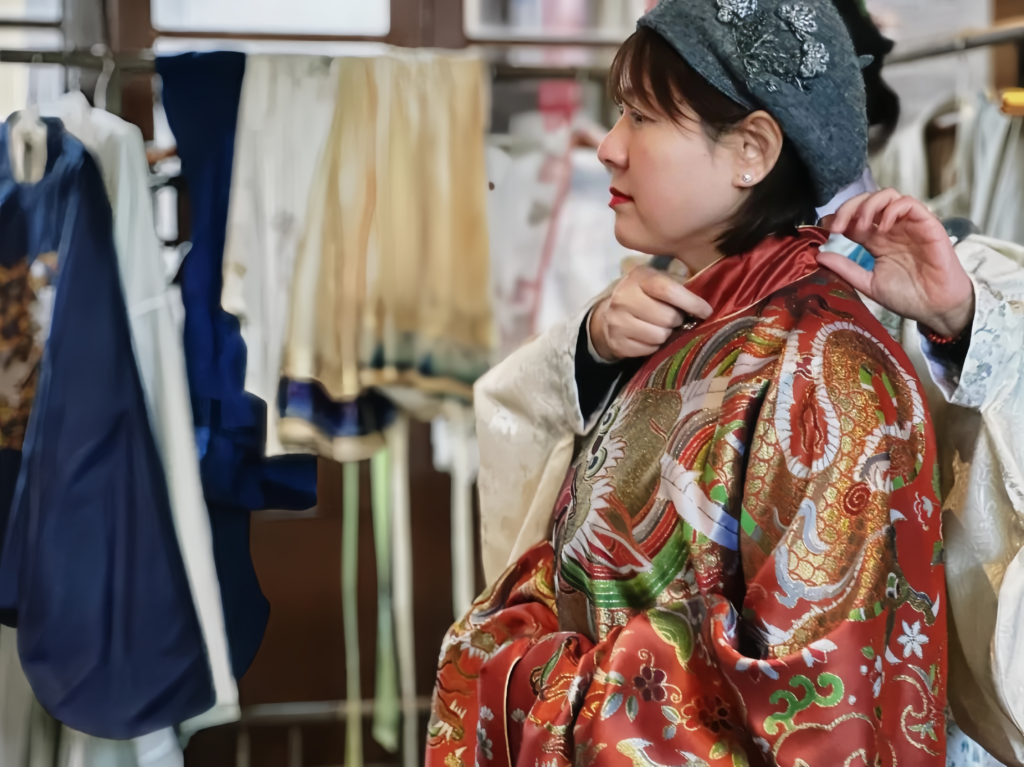Exploring Hanfu: 5 Highlights from Yantai Library Event

Showing how Hanfu culture shines.
In China, we cherish our traditions and elegance, often referring to our land as “Xia” (summer) for its etiquette and “Hua” (splendor) for the beauty of our clothing, showing what Hanfu culture shines. On February 23, Yantai Library hosted an extraordinary event titled “One Hanfu, Thousand Years of History, A Full Room of Attire Discussing Spring and Autumn.” This gathering at Nanshan Academy brought together the timeless charm of Hanfu and the vibrancy of modern culture, showcasing how Chinese traditional clothing bridges history and today.
The Roots of Hanfu: A Journey Through History
The event kicked off with a powerful quote from the Book of Rites: “The Yellow Emperor’s robes brought peace to the world.” This set the stage for a deep dive into the meaning of Hanfu—its right-side overlap, wide sleeves, and tied design symbolizing harmony. Attendees explored the evolution of Hanfu history:
To deepen your understanding of the historical roots and symbolism behind Hanfu designs like the right-side overlap and wide sleeves, ‘Guide to Traditional Chinese Clothing – Hanfu‘ provides a comprehensive exploration of its evolution from ancient dynasties to modern interpretations.
- The flowing robes of the Han and Jin Dynasties.
- The bold, luxurious Tang Dynasty attire.
- The minimalist elegance of Song Dynasty clothing.
- The intricate golden-threaded skirts of the Ming Dynasty.
Each piece of Chinese traditional clothing reflects a philosophy of balance between nature and humanity. For more on its historical significance, visit the China National Silk Museum.

Tracing Back: The Civilizational DNA in Clothing
Began with a quote from the Book of Rites: “The Yellow Emperor’s robes brought peace to the world,” as a way to open the discussion on the profound meaning behind it’s traditional design—its right-side overlap, wide sleeves, and ties. From the Han and Jin Dynasty’s graceful and flowing attire to the bold elegance of Tang Dynasty robes, from the minimalist beauty of Song Dynasty clothing to the dignified elegance of Ming Dynasty golden-threaded skirts, each piece is a philosophical expression of the harmony between heaven and humans.

Immersion: Wearing the Rainbow’s Robes
Stepping Into History: Hanfu Wearable Experiences
One of the event’s highlights was the “time wardrobe,” where participants donned its from various eras:
- Tang Dynasty: Guests wore chest-length robes (qishan) with silk shawls (pibo), feeling the fabric’s graceful sway as they moved.
- Song Dynasty: The simple bei zi overcoat and bai die skirt offered a soft, refined look with muted tones.
- Ming Dynasty: The ma mian skirt paired with long robes exuded scholarly dignity and elegance.
These hands-on experiences connected attendees with its culture, sparking interest in its intricate designs and historical depth.

Dialogue: The Convergence of Tradition and Modernity
How can we tell if a modern Hanfu is accurately designed? How do we incorporate traditional elements into our daily outfits? We shared valuable tips on how to assess the quality of HF by looking at the fabric, patterns, and cuts. The event also introduced the modern Chinese style of HF , showing how it can be matched with traditional elements. It reminded everyone that traditional clothing hasn’t faded away; instead, it continues to live on today in a more subtle and contemporary form.

Tradition Meets Today: Modern HF Insights
A key discussion focused on blending tradition with modernity. How do you spot authentic modern HF ? Experts shared tips: check the fabric quality, pattern accuracy, and cut precision. The event also showcased contemporary Chinese traditional clothing styles, pairing classic elements with everyday wear. This fusion proves that HF isn’t a relic—it’s a living tradition evolving with time. For modern trends, explore Hanfu Today.
Why Yantai Library Matters
Hosting this event, Yantai Library became a cultural hub, celebrating Hanfu culture and its enduring legacy. It wasn’t just about clothing—it was about identity, history, and pride woven into every thread.
A Timeless Takeaway
The Yantai Library event reminded us that Hanfu is more than fashion—it’s a cultural treasure. Whether you’re a history buff or a fashion enthusiast, this celebration of Chinese traditional clothing offers inspiration to explore and even shop for your own piece of heritage.
Similar vibrant celebrations that blend Hanfu with community engagement, such as the Ciqikou Hanfu Gathering, offer immersive experiences where participants bond over shared cultural pride and showcase the living tradition of Chinese attire.





Responses